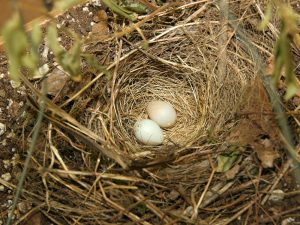 The Columbia City Yoga on-line Moving into Meditation class met this morning. We explored the expressions of compassion. Compassion is nurturing and receptive. Compassion is active. It can be fierce and protective. Practicing self compassion fosters resilience and enhances our responsiveness to others’ pain. The world needs our compassionate action. No effort is too small.
The Columbia City Yoga on-line Moving into Meditation class met this morning. We explored the expressions of compassion. Compassion is nurturing and receptive. Compassion is active. It can be fierce and protective. Practicing self compassion fosters resilience and enhances our responsiveness to others’ pain. The world needs our compassionate action. No effort is too small.
We continued to draw from Oren Jay Sofer’s book: Your Heart Was Made for This: Contemplative Practices for Meeting a World in Crisis with Courage, Integrity, and Love. Oren explores the receptive and active dimensions of compassion. He emphasizes the critical importance of having self-compassion.
We heard Dr. Chris Germer’s thoughts about the “yin and yang” expressions of compassion. Chris is the co-founder of the Center for Mindful Compassion. In his article, The Near and Far Enemies of Fierce Compassion, Chris outlines the components of fierce compassion. He emphasizes the discernment and self awareness required for taking compassionate action. “The more tenderness we have for our pain, the stronger our resilience and more compassion we have for others’ pain.”
 We heard singer songwriter Nick Cave’s response to a fan letter in which the writer states: “I feel impotent, completely ineffectual and that nothing I do is of any consequence whatsoever. Not a question. Just a fact.” Nick affirms that we can both experience our human helplessness and know that everything we think, say and do has consequences. Nick’s practice of responding to fans reflect the compassionate resilience he seems to have cultivated in his own life. He writes: the Red Hand Files are . . . an attempt to transmute suffering into a kind of knowing and shielding joy. Joy as armour. Love as shelter. I don’t know. I hope so.”
We heard singer songwriter Nick Cave’s response to a fan letter in which the writer states: “I feel impotent, completely ineffectual and that nothing I do is of any consequence whatsoever. Not a question. Just a fact.” Nick affirms that we can both experience our human helplessness and know that everything we think, say and do has consequences. Nick’s practice of responding to fans reflect the compassionate resilience he seems to have cultivated in his own life. He writes: the Red Hand Files are . . . an attempt to transmute suffering into a kind of knowing and shielding joy. Joy as armour. Love as shelter. I don’t know. I hope so.” Guided Reflection
Guided Reflection
Welcome. Last week we explored how our beginner’s mind helps us to access our playful instincts. Like the practice of mindfulness we can explore life in a fresh, imaginative way. A beginner’s mind is an open mind. An open mind helps to keep our hearts open. Our aspiration to live open heartedly helps us to realize compassion. The world desperately needs our compassion. Oren Jay Sofer writes:
The heartbreak that occurs daily on our planet . . . is greater than we can comprehend: too vast to hold and too deep to fathom. Yet with compassion we can navigate our challenges with balance together, healing our nervous systems, relationships and communities.
Compassion is like a many faceted jewel reflecting the brilliance of our healing instincts. We can both reflect and radiate the light of loving kindness and caring action. Mindfulness – present moment awareness – can help us recognize how we are meeting life’s heartbreaks. It can help us to recognize suffering. I often find myself in the middle of trying to control, fix or avoid pain. How did I get here? It happens so fast. Sometimes I experience grace when I can pause long enough to recognize a moment of struggle. Oren writes:
 Compassion . . touches pain with mercy. It is engaged, strong and available. Rooted in tenderness it embraces hurt with love. Compassion, like aspiration, includes a twofold process:
Compassion . . touches pain with mercy. It is engaged, strong and available. Rooted in tenderness it embraces hurt with love. Compassion, like aspiration, includes a twofold process:
its receptive component feels, trembling with care
its active component responds asking “How can I help?”
Receptively we stay present and offer caring companionship with the pain.
Having a beginner’s mind, helps me to listen open heartedly to what is needed. It helps me to ask for help when it is needed – to draw on the healing resources of loving community.
Dr. Chris Germer, co-developer of the Center for Mindful Self Compassion, discusses the yin and yang sides of compassion. He explains that:
 Throughout the world, compassion is generally associated with the yin, or nurturing, aspect of compassion. The yin aspect refers to “being with” another person, especially comforting, connecting and validating the pain of another. . . . Taking action is the “yang” side of compassion especially protecting others, providing for those in need, and motivating one another to do what’s right, even if it’s hard. . . . Sometimes yang compassion needs to be fierce . . . fierce compassion is like the behavior of a mamma bear when her cub is threatened.
Throughout the world, compassion is generally associated with the yin, or nurturing, aspect of compassion. The yin aspect refers to “being with” another person, especially comforting, connecting and validating the pain of another. . . . Taking action is the “yang” side of compassion especially protecting others, providing for those in need, and motivating one another to do what’s right, even if it’s hard. . . . Sometimes yang compassion needs to be fierce . . . fierce compassion is like the behavior of a mamma bear when her cub is threatened.
Oren reminds us that
Having compassion for others also depends on having compassion for ourselves. . . . Developing compassion for the world includes turning our attention inward with a tender gaze and making space of all that we feel. . . . the more tenderness we have for our pain, the stronger our resilience and more compassion we have for others’ pain.
I am imagining a field of compassion from which its many expressions arise: the receptive and the active, the yin and yang, including me and you, humans and more than humans. Compassion makes life possible. Singer songwriter Nick Cave describes the importance of our role in the field:
 The everyday human gesture is always a heartbeat away from the miraculous — [remember] that ultimately we make things happen through our actions, way beyond our understanding or intention; that our seemingly small ordinary human acts have untold consequences; that what we do in this world means something; that we are not nothing; and that our most quotidian human actions by their nature burst the seams of our intent and spill meaningfully and radically through time and space, changing everything… Our deeds, no matter how insignificant they may feel, are replete with meaning, and of vast consequence, and… they constantly impact upon the unfolding story of the world, whether we know it or not.
The everyday human gesture is always a heartbeat away from the miraculous — [remember] that ultimately we make things happen through our actions, way beyond our understanding or intention; that our seemingly small ordinary human acts have untold consequences; that what we do in this world means something; that we are not nothing; and that our most quotidian human actions by their nature burst the seams of our intent and spill meaningfully and radically through time and space, changing everything… Our deeds, no matter how insignificant they may feel, are replete with meaning, and of vast consequence, and… they constantly impact upon the unfolding story of the world, whether we know it or not.
I invite you to let those many dimensions of compassion simply be present in a way that is true for you. Relax whatever you can. Feel Earth supporting you. May you feel at home in this quiet place of practice where you can stretch out without hurry. It is o.k. to be exactly what you are, who you are, where you are.
 You might take a deep breath or two and sense your aliveness. I invite you to take a moment or two to explore your body. You can scan your body from head to toe or from the out layers of skin to your internal organs. Or from the bottoms of your feet to the crown of your head. The front, sides and back of your body. Sensations may be calling your attention. What is it like to be aware of your body?
You might take a deep breath or two and sense your aliveness. I invite you to take a moment or two to explore your body. You can scan your body from head to toe or from the out layers of skin to your internal organs. Or from the bottoms of your feet to the crown of your head. The front, sides and back of your body. Sensations may be calling your attention. What is it like to be aware of your body?
Take a moment to experience the energy of being. Are you feeling balanced and aware? Energetic or alert? Calm, steady, grounded? How does breathing feel right now?
You might notice the presence of emotions. How are they affecting your body and breath?
What is the state of your mind? Are thoughts elaborating? Are they familiar or new?
Tune in to your ability to be aware of your body, energy, thoughts and emotions. (You might experience this as discernment, witnessing or liberating intuition.) If you are meeting stillness that’s o.k. What is it like to be present for these dimensions of being?
This may be a difficult time in your life. This may be a moment when you are feeling discomfort in your body, sadness in your heart or trouble in your mind. When you become aware of these states, can you be with this experience? You might notice the changing nature of these states. Can you recognize that part of you that is aware and able to discern all these expressions of being? This includes our inter-being – our inter-relationship with all of life.
 I invite you to take a moment to reflect on your relations – family, friends, those of us in circle and people you don’t know. Can you recognize that other people share your experience? You are not alone. You are an important part of the world – a world of many who feel joy and sorrow, pain and loss. You might connect with the heart felt desire that all beings experience love and peace.
I invite you to take a moment to reflect on your relations – family, friends, those of us in circle and people you don’t know. Can you recognize that other people share your experience? You are not alone. You are an important part of the world – a world of many who feel joy and sorrow, pain and loss. You might connect with the heart felt desire that all beings experience love and peace.
Can you take this time to offer kindness to yourself? You might place your hands over your heart as a gesture of compassion. As you breathe in, imagine the breath is softening the area around your heart – front, sides and back. You might repeat silently to yourself, “It’s OK.” As you breathe out, take your time and imagine letting go of any tension around the heart and repeat, “This is enough,” It’s O.K. It’s enough. Can your inner voice be patient, soothing and loving? Repeat this for a few slow breaths and stop when you feel ready.
 When you are ready reflect on how you are feeling in your body, heart and mind. What is needed in this moment? Presence. Loving kindness. A hand to hold.
When you are ready reflect on how you are feeling in your body, heart and mind. What is needed in this moment? Presence. Loving kindness. A hand to hold.
May we be kind to ourselves and others. May our feelings affirm and deepen our shared humanity . . . May we open to our true being in the clear spaciousness of nonjudgmental awareness.
